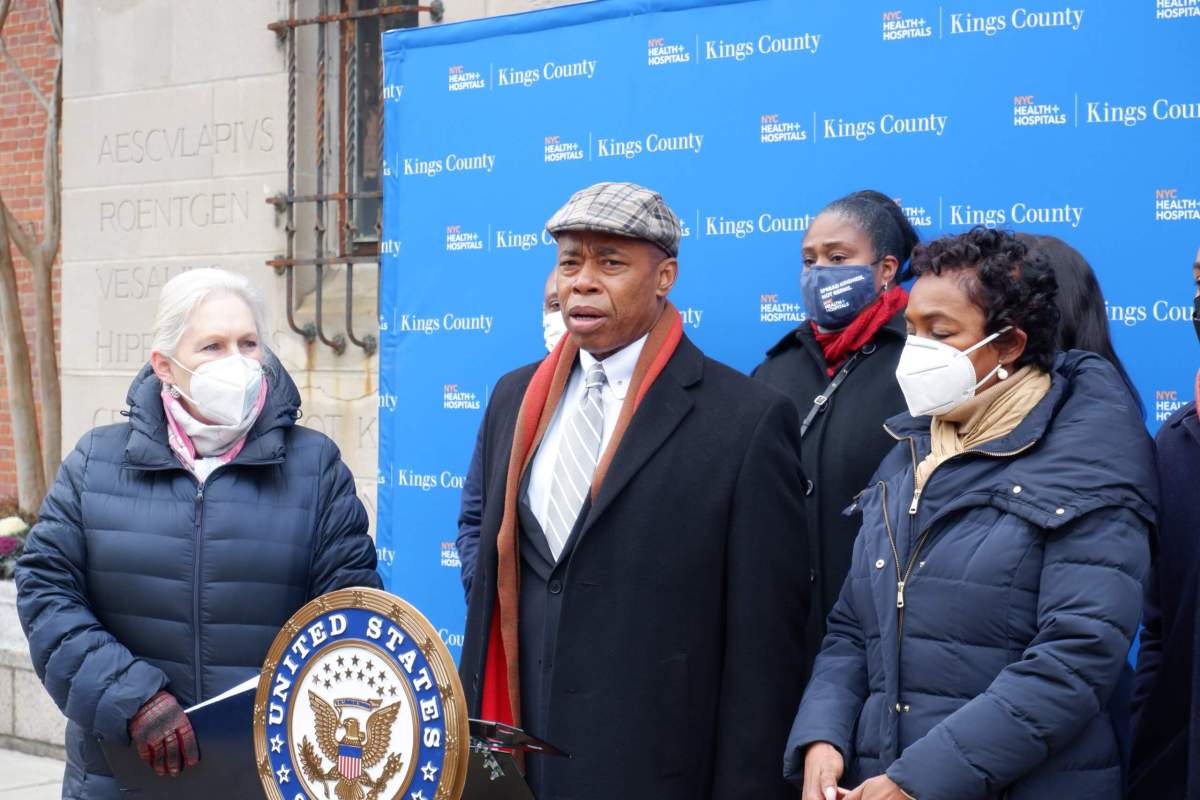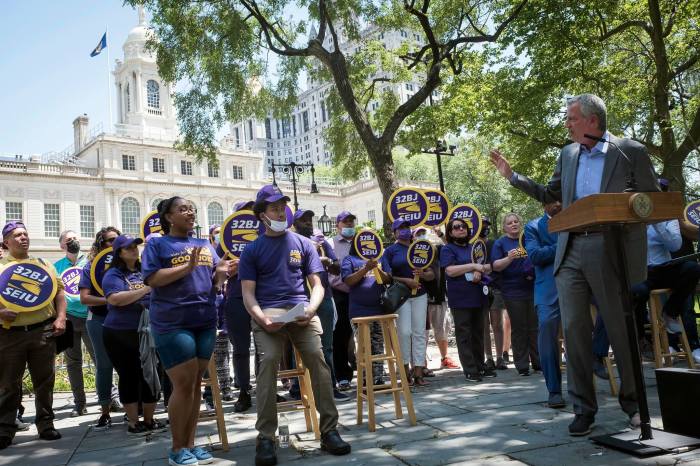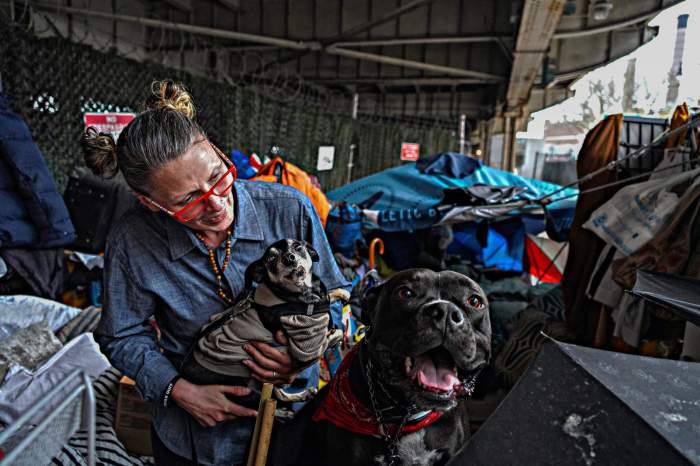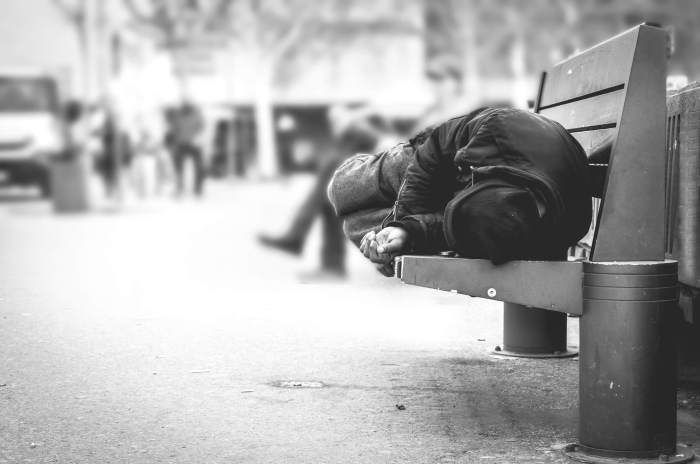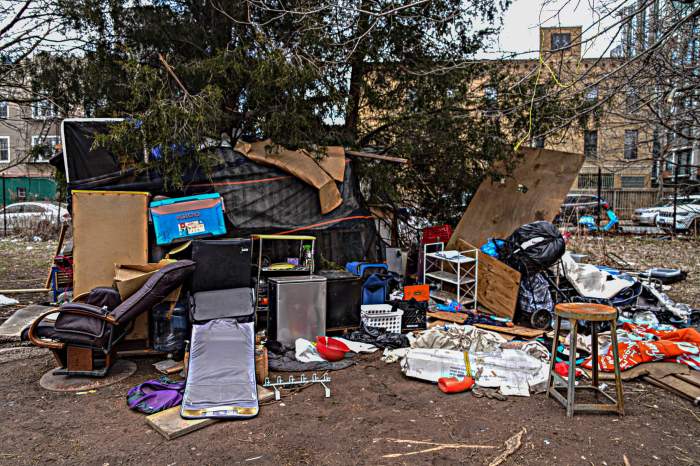Mayor Eric Adams vowed Sunday that the city’s subways remain safe even after a man shoved a woman in front of a Q train at Times Square the day before.
Adams said that his plan to make police officers an “omnipresence” in the transit system was working, but that more resources were needed to deploy enough mental health support workers.
“This is a horrific incident. We lost a New Yorker, but we don’t see how many lives we save because of a proper plan like that and we’re going to continue to expand on it and evolve it,” Adams told reporters after an unrelated press conference in Brooklyn on Jan. 16.
The mayor noted that crime in the subways only makes up 1.7% of the city’s overall figures, citing a figure NYPD Transit Bureau Chief Kathleen O’Reilly told MTA officials at a board meeting last month.
“Think about that for a moment,” Adams said. “We have a safe subway system. Transit police officers, they have done their job.”
The mayor stressed the need for more homeless and mental health social workers to get to the scene faster — something Governor Kathy Hochul promised to send funding toward starting later this year.
“When we see a person on the subway station, right now, it could take anywhere from two hours to get that local [community based organization] to come down and remove them off,” he said. “We don’t want that, we want a faster turnaround and that caused a better deployment of personnel and had a great conversation with the governor about that.”
Homeless man Simon Martial, 61, turned himself in for allegedly pushing the woman onto the tracks on the afternoon of Jan. 15, and police have charged him with second-degree murder.

The victim, 40-year-old Michelle Go, was Asian, fueling fears that the her deadly attack was part of a surge in anti-Asian hate crimes in the subway system.
“What we must do is remove the perception of fear. Cases like this aggravate the perception of fear,” Adams said.
Hizzoner echoed Metropolitan Transportation Authority officials who have repeatedly called for more police to make straphangers feel comfortable and lure back more commuters to the transit system to help the agency recover from the pandemic ridership slump.
“Perception is reality to a lot of people and if people don’t feel safe, they’re not going to go into the system,” said Lisa Daglian, executive director of the MTA’s in-house rider advocacy council, the Permanent Citizens Advisory Committee.
Recent police statistics show there were 166 transit crimes over the last 28-day period, up from 101 the same time last year, or a 64.4% increase.
Longer-term trends, however, show that crime in the subway system has been decreasing over the past years and decades, with a rate of 4.73 major felonies per day from January through November of 2021, the lowest of that time period since 1997, according to a report the Transit Bureau provided to MTA board members in December.
One public transit booster said Adams’s statement marked a refreshing shift from previous government leaders like ex-Governor Andrew Cuomo, who repeatedly railed against the subway system he controlled as being filthy and crime-ridden.
“One of the tragedies of last year is the subway was used as a political football and people in very high positions deliberately cast doubt on its safety for their own personal gain,” said Danny Pearlstein of Riders Alliance. “That damaged the subway and it damaged the city and Mayor Adams and the MTA now are picking up the pieces.”



